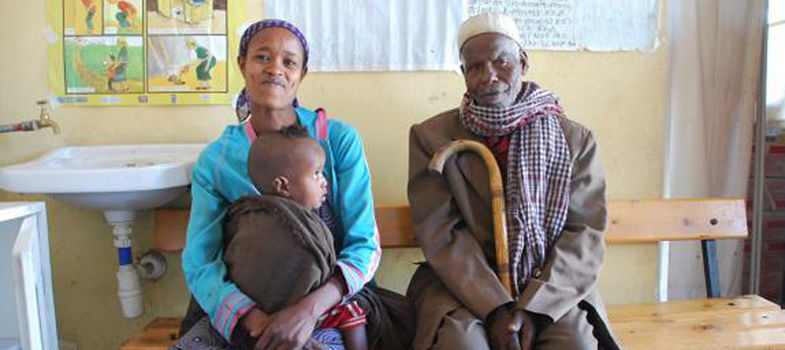Self-Assessment Questions (SAQs) for Study Session 9
Now that you have completed this study session, you can assess how well you have achieved its Learning Outcomes by answering these questions. Write your answers in your Study Diary and discuss them with your Tutor at the next Study Support Meeting. You can check your answers with the Notes on the Self-Assessment Questions at the end of this Module.
SAQ 9.1 (tests Learning Outcome 9.1)
Match each of the diagnoses with its associated warning sign or symptom.
Using the following two lists, match each numbered item with the correct letter.
pallor
neck swelling
fever
larger uterus than expected for this stage of pregnancy
high blood pressure
a.Diabetes
b.Pre-eclampsia
c.Malaria
d.Anaemia
e.Goitre
- 1 = d
- 2 = e
- 3 = c
- 4 = a
- 5 = b
SAQ 9.2 (tests Learning Outcomes 9.2 and 9.3)
Which of the following statements is false? In each case, say why it is incorrect.
A Maternal goitre is caused by iron deficiency.
B Maternal diabetes often results in a big baby.
C Shortness of breath may be caused by anaemia, a heart problem, lung infection or a blood clot.
D A blood pressure of 90/50 mmHg is a sign of good health.
E A pulse rate of 80 beats per minute or less is a possible warning sign of anaemia.
F Blood pressure and pulse rate should be measured when the woman is sitting comfortably.
Answer
A is false. Goitre is caused by iodine deficiency, and not by iron deficiency.
B is true. Maternal diabetes often results in a big baby because the mother has too much sugar in her blood, which makes the baby fat.
C is true. Shortness of breath may be caused by anaemia, a heart problem, lung infection or a blood clot.
D is false. A blood pressure of 90/50 mmHg is very low, and is a characteristic sign of heavy bleeding or shock. In such a case the woman has to be referred to a health centre right away.
E is false. Normal resting pulse rate is 60-80 beats a minute. A fast pulse (100 beats a minute or above) may be a sign of anaemia.
F is true. Blood pressure and pulse rate should be measured when the woman is sitting comfortably.
SAQ 9.3 (tests Learning Outcomes 9.2 and 9.3)
At an antenatal visit to see Zufan, you record the following measurements:
- Temperature: 37.2°C
- Pulse rate: 96 beats a minute
- Blood pressure: 142/100 mmHg
Should you refer Zufan to a health centre? Explain why or why not.
Answer
You should refer Zufan immediately. Although her temperature is close to normal and gives no cause for concern, her pulse rate is faster than normal, and her blood pressure is very high — the top and the bottom numbers are both above the warning level of 140/90 mmHg.
Summary of Study Session 9
